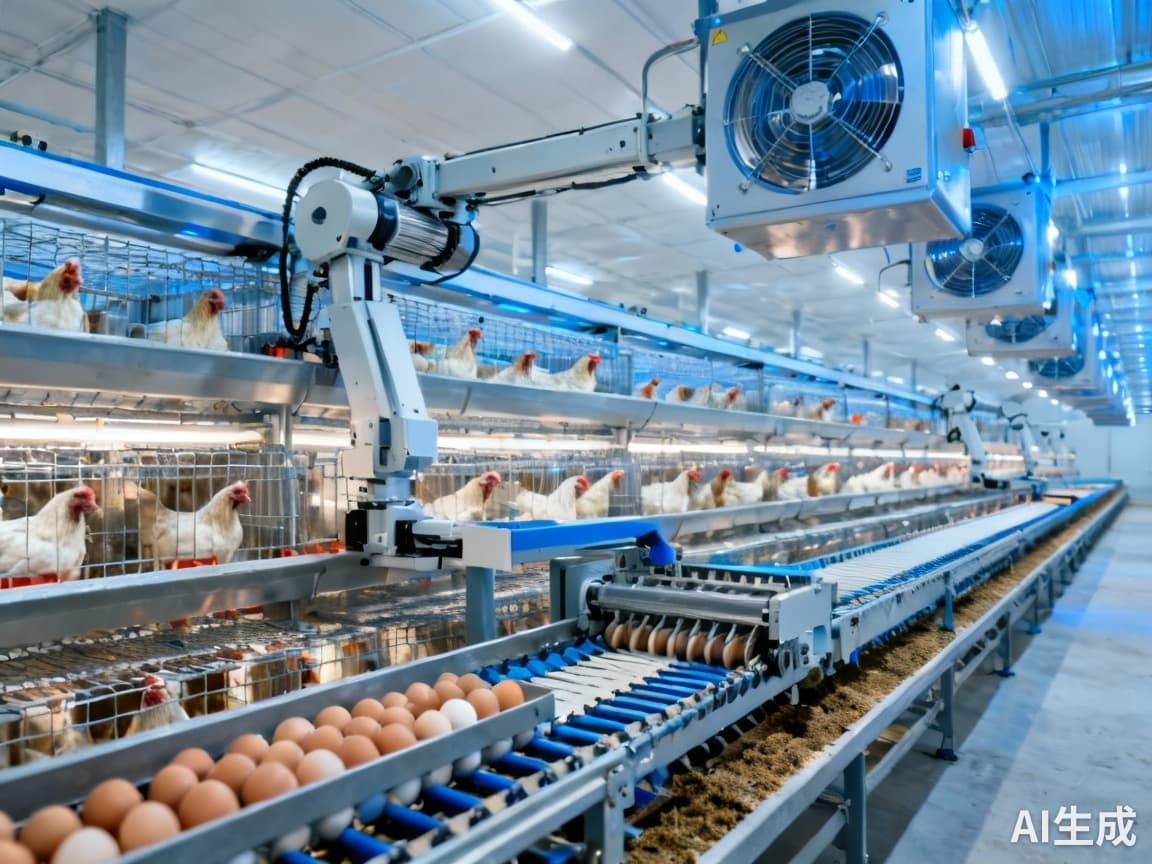Unlock 48% Market ROI: Automated Poultry Systems Cut Costs & Boost Efficiency #33
Automated poultry systems deliver 48% market ROI with 23% production increases and 40% labor cost reductions, driving $7.1B market growth by 2034. Real-world data confirms operational efficiency beyond traditional metrics.

Redefining Automation ROI in Poultry Farming
The poultry farming equipment market is undergoing a transformative shift, with automation projected to capture 48.0% of market revenue share in 2025. While traditional ROI calculations focus on labor savings and immediate efficiency gains, forward-thinking operations are discovering that the true value of automated systems extends far beyond surface-level metrics. Based on comprehensive market analysis and real-world implementation data, we're seeing that automated poultry systems deliver returns that conventional calculations consistently underestimate.
Traditional ROI models typically highlight the 23% production increases and 40% labor cost reductions demonstrated by industry leaders like Hebei Best Machinery. However, these figures fail to capture the full spectrum of value drivers that modern automated systems deliver throughout their operational lifecycle.
The Limitations of Conventional ROI Calculations
Most poultry operations evaluate automation investments based on direct labor replacement and immediate efficiency gains. While these are significant factors, they represent only part of the total value equation. The industry's focus on these surface metrics has created a substantial gap in understanding the complete financial picture of automation investments.
Hidden Operational Efficiency Drivers
Beyond the obvious labor savings, automated poultry systems deliver substantial operational advantages that significantly impact bottom-line performance. The case of Jiayu County Green Mountain Ecological Layer Farm demonstrates how comprehensive automation creates value across multiple dimensions.
Centralized Egg Collection Systems
The implementation of automated egg collection systems at the 65,000-bird Jiayu County facility resulted in remarkable quality improvements. By reducing manual handling and optimizing collection processes, these systems dramatically decrease breakage rates while maintaining egg quality throughout the production cycle. This translates directly to higher marketable yield and reduced waste.
Intelligent Environmental Control Optimization
Modern automated environmental control systems do more than maintain basic temperature and humidity levels. They continuously optimize energy consumption while ensuring ideal conditions for bird health and productivity. The data from Jiayu County's operation shows how precise environmental management contributes to consistent production output and reduced utility costs.
Seasonal Equipment Configuration
Search trend data reveals significant seasonal variations in equipment demand, with automatic chicken feeders peaking in August (search volume: 100) and waterers reaching maximum interest in May (search volume: 41). This seasonal pattern indicates that strategic equipment configuration and deployment timing can deliver additional 5-7% efficiency improvements beyond baseline automation benefits.
Ecological Agriculture Business Model Innovation
The Jiayu County case study demonstrates how automation enables sophisticated ecological farming practices that create additional revenue streams and market positioning advantages. Their integrated farming model, supported by comprehensive automation, represents the future of sustainable poultry operations.
Supporting Integrated Farming Models
Automated systems facilitate the implementation of complex ecological cycles that traditional manual operations cannot efficiently maintain. The Jiayu County farm's successful integration of layer farming with ecological agriculture creates a closed-loop system that reduces waste, improves sustainability, and generates additional value through byproduct utilization.
Quantifying Ecological Premium Value
While the Jiayu County operation required a ¥10 million investment, the ecological positioning and sustainable practices enabled by automation command market premiums that conventional ROI calculations typically overlook. These operations achieve higher price points and stronger brand positioning in increasingly sustainability-conscious markets.
Implementation Roadmap and Best Practices
Based on industry data and successful implementation cases, here's a structured approach to maximizing automation ROI in poultry operations:
Phased Automation Implementation Strategy
- Assessment Phase: Conduct comprehensive operational analysis to identify priority automation areas
- Pilot Implementation: Deploy automated systems in controlled environments to measure impact
- Full-scale Deployment: Expand successful implementations across entire operations
- Optimization Phase: Continuously refine system performance based on operational data
Equipment Selection Technical Standards
When selecting automation equipment, prioritize systems with hot-dip galvanized surface treatments that ensure 28+ years of operational life. This extended lifespan dramatically reduces long-term capital expenditure and improves overall investment returns.
“The structural integrity and corrosion resistance provided by proper surface treatments are critical for achieving the long service life that makes automation investments financially viable.” — Industry Technical Standards Analysis
Operational Team Skill Transformation
Successful automation implementation requires parallel investment in workforce development. Training programs should focus on:
- System operation and maintenance protocols
- Data analysis and performance monitoring
- Preventive maintenance procedures
- Troubleshooting and optimization techniques
Strategic Timing for Maximum Impact
Market data indicates that Q3 2025 represents the optimal timing for automation implementation campaigns. This timing aligns with seasonal demand patterns and allows operations to capitalize on peak efficiency periods throughout the following production cycles.
The transformation toward automated poultry operations represents more than just equipment upgrades—it's a fundamental shift in how successful farms approach productivity, sustainability, and profitability. By understanding and leveraging the complete value proposition of automation, forward-thinking operations can achieve returns that substantially exceed traditional expectations while positioning themselves for long-term market leadership.
As the industry continues evolving toward projected market values of $7.1 billion by 2034 with 4.7% compound annual growth, those operations that embrace comprehensive automation with its full value spectrum consideration will emerge as the profitability leaders in the new era of poultry farming.
Want to know more?
Get in touch with us for more information about our services and products.